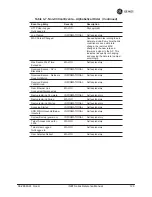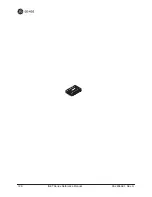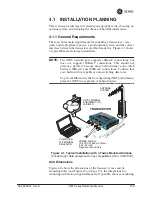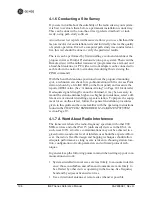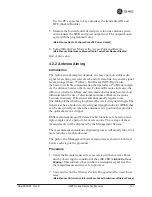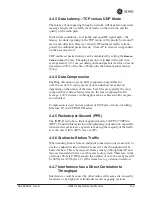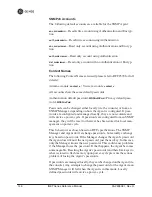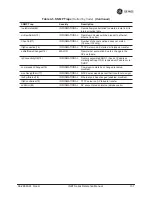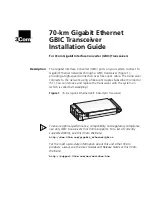
05-2806A01, Rev. H
iNET Series Reference Manual
137
Although these antennas may be more costly than omnidirectional
types, they con
fi
ne the transmission and reception pattern to a com-
paratively narrow lobe, that minimizes interference to (and from)
stations located outside the pattern.
• If interference is suspected from a nearby licensed system (such as a
paging transmitter), it may be helpful to use horizontal polarization
of all antennas in the network. Because most other services use ver-
tical polarization in this band, an additional 20 dB of attenuation to
interference can be achieved by using horizontal polarization.
Another approach is to use a bandpass
fi
lter to attenuate all signals
outside the 900 MHz band.
• Multiple Access Point units can co-exist in proximity to each other
with only very minor interference. Each network name has a differ-
ent hop pattern. (See
“
Protected Network Operation using Multiple
Access Points” on Page 14.) Additional isolation can be achieved by
using separate directional antennas with as much vertical or horizon-
tal separation as is practical.
• If constant interference is present in a particular frequency zone
(collection of 8 RF channels), it may be necessary to “skip” that
zone from the radio’s hopping pattern. The radio includes built-in
software to help users identify and remove blocked frequency zones
from its hopping pattern. See Page 56 for more information on Skip
Zones.
• If interference problems persist even after skipping some zones, try
reducing the length of data streams. Groups of short data streams
have a better chance of getting through in the presence of interfer-
ence than do long streams.
• The power output of all radios in a system should be set for the low-
est level necessary for reliable communications. This lessens the
chance of causing unnecessary interference to nearby systems.
If you are not familiar with these interference-control techniques, con-
tact your factory representative for more information.
Calculating System Gain
To determine the maximum allowable power setting of the radio, per-
form the following steps:
1. Determine the antenna system gain by subtracting the feedline loss
(in dB) from the antenna gain (in dBi). For example, if the antenna
gain is 9.5 dBi, and the feedline loss is 1.5 dB, the antenna system
gain would be 8 dB. (If the antenna system gain is 6 dB or less, no
power adjustment is required.)
Summary of Contents for MDS iNET 900
Page 12: ...2 iNET Series Reference Manual 05 2806A01 Rev H ...
Page 32: ...22 iNET Series Reference Manual 05 2806A01 Rev H ...
Page 122: ...112 iNET Series Reference Manual 05 2806A01 Rev H ...
Page 124: ...114 iNET Series Reference Manual 05 2806A01 Rev H ...
Page 136: ...126 iNET Series Reference Manual 05 2806A01 Rev H ...
Page 138: ...128 iNET Series Reference Manual 05 2806A01 Rev H ...
Page 162: ...152 iNET Series Reference Manual 05 2806A01 Rev H ...
Page 164: ...154 iNET Series Reference Manual 05 2806A01 Rev H ...
Page 174: ...164 iNET Series Reference Manual 05 2806A01 Rev H ...
Page 182: ...172 iNET Series Reference Manual 05 2806A01 Rev H ...



